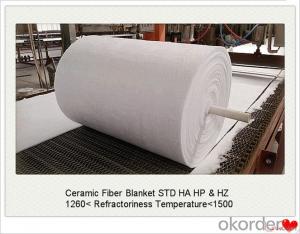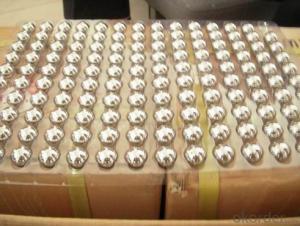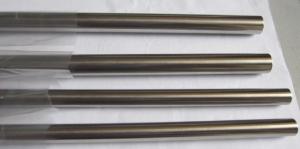Industrial Stainless Steel Cleaner
Industrial Stainless Steel Cleaner Related Searches
Best Paint For Stainless Steel Blanket Insulation For Steel Buildings Primer For Galvanized Steel Foam Filter For Stainless Steel H S Code For Stainless Steel Surface Grinding Wheels For Stainless Steel Surface Grinding Wheels For Hardened Steel Hole Saw For Stainless Steel Paint For Stainless Steel Stainless Steel For BbqHot Searches
Steel Mesh Panels For Sale Price For Stainless Steel Scrap Scrap Price For Stainless Steel Price For Stainless Steel Stainless Steel Tank For Sale Stainless Steel Sheets For Sale Cheap High Tea Sets For Sale Stainless Steel Tanks For Sale Stainless Steel For Sale High Density Fiberboard For Sale Solar Hot Water Collectors For Sale Scaffolding For Sale In Uae Scaffolding For Sale In Ireland Scaffolding For Sale In Houston Type Of Inverter For Solar Price Of Shipping Containers For Sale Types Of Inverter For Solar Stock Price For Aluminum Used Solar Inverter For Sale Steel Mesh Panels For SaleIndustrial Stainless Steel Cleaner Supplier & Manufacturer from China
Okorder.com is a professional Industrial Stainless Steel Cleaner supplier & manufacturer, offers integrated one-stop services including real-time quoting and online cargo tracking. We are funded by CNBM Group, a Fortune 500 enterprise and the largest Industrial Stainless Steel Cleaner firm in China.Hot Products
FAQ
- To calculate the pipe volume for a specific application, you need to consider a few key parameters. Firstly, you need to determine the pipe's inner diameter (ID) or outer diameter (OD), depending on the available information. The diameter is typically measured in inches or millimeters. Next, you need to measure the length of the pipe, which can be done in feet or meters. Once you have the diameter and length, you can use the formula for calculating the volume of a cylinder to find the pipe volume. The formula is V = π * r^2 * h, where V is the volume, π is a mathematical constant approximately equal to 3.14159, r is the radius of the pipe (equal to half the diameter), and h is the length of the pipe. If you have the ID, you can directly use the radius as half of the ID. However, if you have the OD, you need to subtract the pipe's wall thickness from the OD to find the ID and then calculate the radius. After substituting the values into the formula, you can solve for the pipe volume. The resulting volume will be in cubic inches or cubic meters, depending on the units used for diameter and length.
- Indeed, stainless steel pipes are indeed a fitting choice for nuclear power plants. Owing to their remarkable resistance to corrosion, impressive strength, and capability to endure extreme temperatures and pressures, stainless steel has gained widespread utilization in nuclear power plants. These pipes serve various functions within the nuclear power plant, such as transporting coolant, steam, and other fluids. The resistance of stainless steel pipes to corrosion is of utmost importance in averting leaks and preserving the integrity of the system. Moreover, stainless steel also exhibits resistance to radiation damage, rendering it a fitting substance for applications in nuclear power plants.
- Indeed, wastewater applications can utilize stainless steel pipes. The exceptional corrosion resistance of stainless steel enables it to endure the demanding conditions and chemicals commonly encountered in wastewater. Moreover, stainless steel exhibits durability and boasts an extensive lifespan, rendering it a fitting selection for managing wastewater. Furthermore, the smooth interiors of stainless steel pipes aid in averting obstructions and facilitating the efficient flow of wastewater. In addition, stainless steel contributes to environmental friendliness as it is entirely recyclable and causes minimal harm to the environment. In summary, stainless steel pipes represent a dependable and sustainable choice for wastewater applications.
- The difference between stainless steel pipe and stainless steel composite pipe
- Stainless steel pipe is a kind of hollow long strip round steel, mainly used in petroleum, chemical, medical, food, light industry, machinery, instrument and other industrial pipeline and mechanical structure parts. In addition, the bending and torsional strength of the same weight is lighter, so it is also widely used in the manufacture of mechanical parts and engineering structures. It is also used to produce all kinds of conventional weapons, guns, shells and so on.
- Yes, stainless steel pipes can be used for chemical pumps. Stainless steel is known for its corrosion resistance, making it a suitable material for handling various chemicals. It can withstand the corrosive nature of many chemicals and prevent contamination of the pumped fluids. Additionally, stainless steel pipes offer good mechanical strength and durability, making them ideal for use in chemical pumps that require reliability and long-term performance. However, it is important to consider the specific requirements of the chemicals being pumped and consult with experts or manufacturers to ensure that the stainless steel chosen is compatible with the particular chemicals and operating conditions.
- Yes, stainless steel pipes can be used in the petrochemical industry. Stainless steel is highly resistant to corrosion and can withstand high temperatures, making it an ideal choice for transporting and storing various petrochemical products. Its durability and strength also make it suitable for handling the high-pressure conditions often encountered in the petrochemical industry. Additionally, stainless steel pipes are easy to clean and maintain, ensuring the purity and integrity of the petrochemical products being transported. Therefore, stainless steel pipes are commonly used in petrochemical plants, refineries, and other facilities within the industry.
- Stainless steel pipes generally do not require insulation, as they have a high resistance to corrosion and can withstand high temperatures. However, there are certain situations where insulation may be necessary. For instance, when transporting fluids at extremely low temperatures, insulation helps to prevent heat transfer and maintain the temperature of the fluid. Additionally, in environments where condensation may occur, insulation can prevent moisture from forming on the pipes and causing potential damage. Overall, the need for insulation in stainless steel pipes depends on the specific application and the conditions in which they are used.
- Stainless steel pipes are renowned for their exceptional durability and ability to withstand the harshest weather conditions. They exhibit remarkable resistance to extreme temperatures, heavy rainfall, fierce winds, and even harsh chemicals, remaining corrosion-free and undeteriorated. The inherent qualities of stainless steel, including its superior strength, resistance to corrosion, and tolerance to heat, render it an optimal choice for outdoor applications and adverse weather circumstances. Stainless steel pipes effectively endure intense heat and cold, while effectively combating the detrimental effects of UV radiation and oxidation. These pipes find extensive use in industries encompassing oil and gas, chemical processing, construction, and marine applications, where they confront formidable environments. All in all, stainless steel pipes offer a dependable and enduring solution for handling the most severe weather conditions.














































